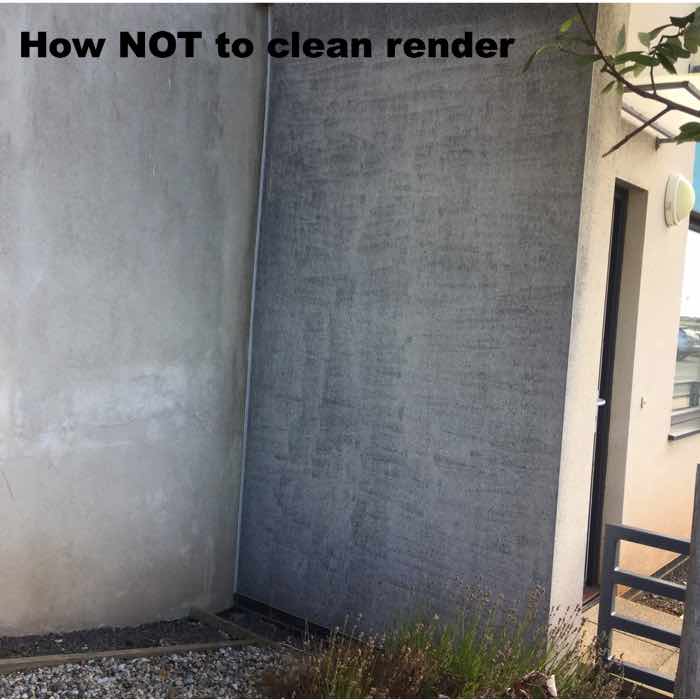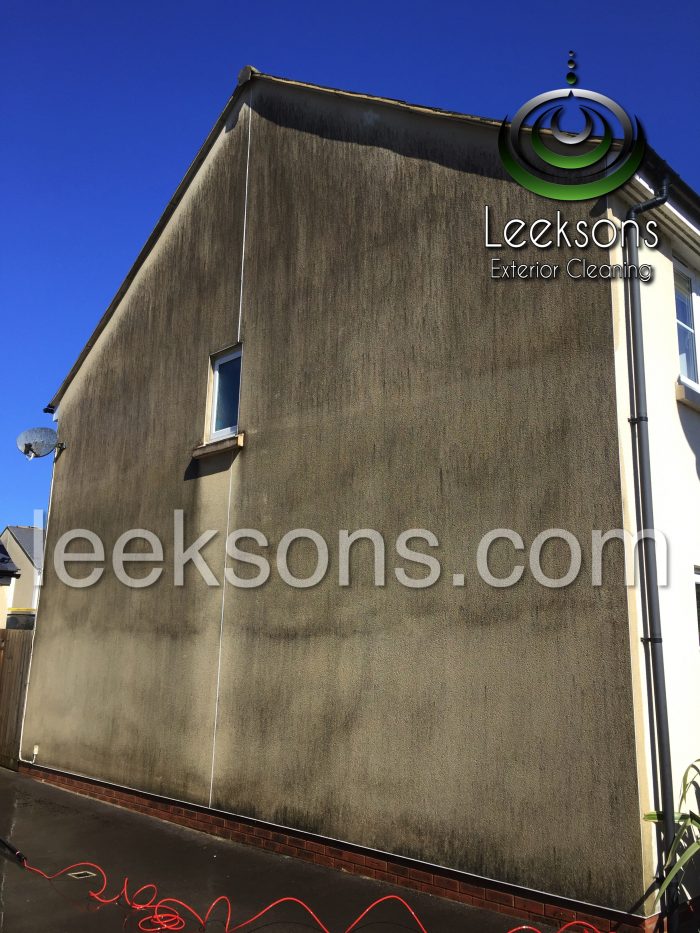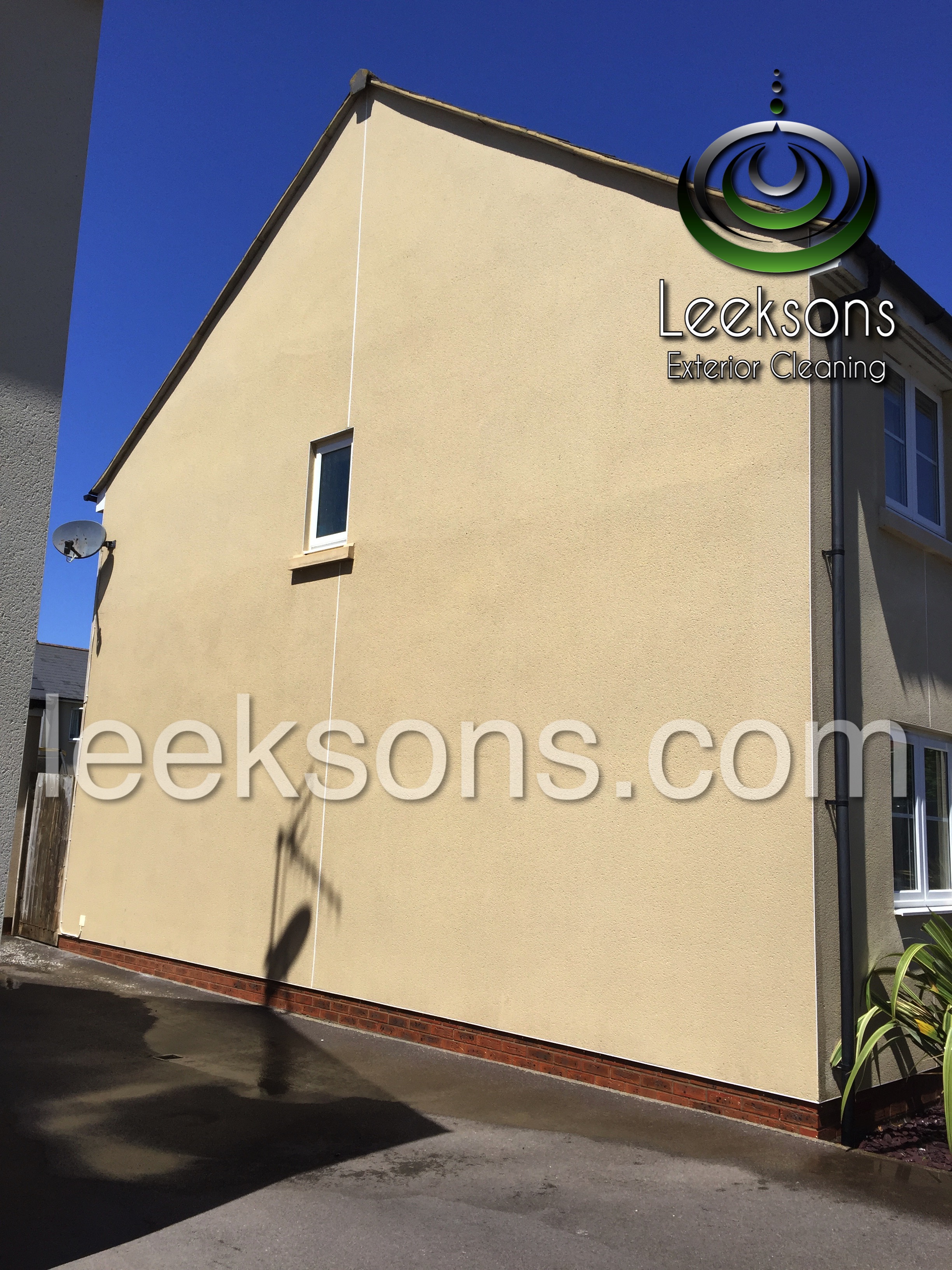Do you have K Rend on your property? Through coloured renders come under many different brand. However, the most well known brand of render is K Rend. Other types are Weber Render, Monocouche Render, Parex render Sto render, etc. Within a few years you render will start to look grubby. Green algae stains, red streaks caused by algae growth and black algae and mold staining will develop quickly. So what should you do? Can you pressure wash render? This article will discuss three reasons why you should not pressure wash your render.
1 – Pressure washing strips the surface
When your render starts to look dirty pressure washing is usually the DIYers first attempt. “I’ll get out the Karcher and give it a blast”. Although using a pressure washer is ideal for stone and concrete surfaces, pressure washing render is not a good idea. Pressure washing rendered surfaces, such as K Rend actually strips the surface off the wall. As K Rend is only around 9mm thick, taking a few millimetres off the wall every time is is cleaned will lead to big problems. If your K Rend, Weber render, etc is pressure washed the render will become thinner which will lead to cracks forming, pieces falling off and an uneven finish.
2. Pressure washing can etch the surface
Pressure washing render with a pencil jet, or a fan jet used closely will cause etching on the render. Once your render is etched it will always show as the surface has been damaged. Although the render will likely look a little cleaner after pressure washing, it will not last. As the algae regrows on the surface the etching will be prominent. This means not only with the render be damaged, but the render will look patchy and show the lines of the etches. This only solution to etched render is to re-render the property which will come at a considerable cost.

3. Pressure washing render does not get to the ‘root’ of the problem
Through coloured renders such as K Rend, Monocouche render and Weber render all suffer with the same problems. They are a breeding ground for algae, lichen, moss and mold. These micro organisms thrive on the render and not only look bad, but also damage the surface. If the homeowner, or a company, was to pressure wash render, the roots of these micro organisms will not be killed. This means within a few months the algae, moss and bacteria will grow back.
What is the solution to dirty render?
The answer: Softwash render cleaning and low pressure steam cleaning
By using the correct methods for render cleaning no damage will be done to the surface, and the render will stay cleaners for much longer. By getting to the root of the problem and killing the bacteria growing on the surface the building will stay cleaner for longer. Softwash render cleaning involves applying chemicals to the surface under extremely low pressure. This is often applied from he floor using telescopic cleaning tools. The pressure used at this stage is similar to that of a domestic hose pipe. Low pressure steam is often needed for stone ledges and areas close to the ground where a build up can form from splash up.
We have shown you Three reasons why you should not pressure wash your render. Instead always choose a low pressure option for your render cleaning.
Take a look at some of our previous work showing the difference a professional clean can make


